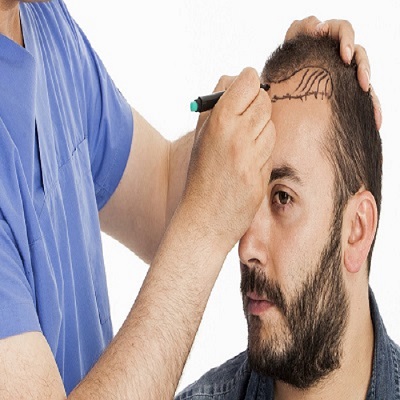Deciding to undergo a hair transplant is a big step toward regaining your confidence and restoring a natural hairline. One of the most common questions asked during consultations is: “When can I return to work after a hair transplant?” The answer depends on a few factors such as the type of transplant performed, the nature of your job, and how your body heals. If you’re planning a Hair Transplant in Islamabad, it’s important to understand the timeline for recovery so you can make arrangements for a smooth and stress-free return to your daily routine.
Immediate Post-Operative Period (First 24-72 Hours)
After your hair transplant surgery—whether FUE (Follicular Unit Extraction) or FUT (Follicular Unit Transplantation)—the first 24 to 72 hours are the most crucial. During this period, you may experience minor swelling, redness, or tightness around the treated areas. While pain is generally minimal and easily managed with medication, it’s recommended that you rest at home for the first couple of days.
Physical activity and work should be avoided during this initial recovery window, especially if your job is physically demanding or exposes you to dust, heat, or sweat. Allowing your body this short period to recover significantly helps ensure better graft survival and minimizes complications.
Resuming Office or Desk Jobs (3 to 5 Days)
If your job involves minimal physical exertion—such as office work, IT, customer service, or administrative roles—you can usually return to work within 3 to 5 days after the procedure. However, it’s still important to take precautions:
-
Avoid direct sun exposure to the scalp.
-
Refrain from touching or scratching the newly transplanted areas.
-
Wear a loose-fitting hat (if necessary) as advised by your surgeon.
-
Follow all aftercare instructions strictly, including scalp hygiene and medication.
In many cases, patients choose to take 5–7 days off to allow scabs to heal and reduce any visible signs of surgery like redness or swelling.
Returning to Physically Demanding Jobs (10–14 Days)
If your work involves physical labor, outdoor activity, or tasks that cause sweating (e.g., construction, fitness training, delivery services), you’ll likely need more time off—usually 10 to 14 days. This additional time ensures that:
-
Grafts are fully secured and not disturbed by excess movement or sweating.
-
You avoid infection caused by exposure to dirt, bacteria, or moisture.
-
Swelling and tenderness have fully resolved.
Your surgeon will provide personalized advice based on your job type and how your body is healing.
Managing Appearance at Work
One of the main concerns about returning to work is appearance. Post-surgery, your scalp may have visible scabs, redness, or small marks where follicles were implanted. This appearance typically fades within 7–10 days.
If you are concerned about how you will look when returning to work, consider scheduling your procedure before a weekend or during a holiday break. Alternatively, wearing a clean, breathable cap (approved by your surgeon) can help you feel more comfortable in public during recovery.
Things to Avoid When You Go Back to Work
Once you’re back at work, you’ll need to continue following aftercare instructions even if you feel physically well. Some important precautions include:
-
Avoid heavy sweating from stress or physical activity.
-
Do not expose your scalp to UV rays—stay indoors or wear a loose hat.
-
Avoid crowded environments where you might bump your head or get exposed to dust.
-
Stay away from styling products or hair treatments until cleared by your doctor.
Remember, while you may feel ready to return to work quickly, your scalp is still in healing mode, and protecting your results during this phase is essential.
Timeline of Healing Milestones
To help you better understand the overall recovery and return-to-work journey, here’s a general timeline:
-
Day 1–3: Rest at home; avoid work and physical exertion.
-
Day 4–7: Resume light work if comfortable; expect minor scabbing or redness.
-
Day 10–14: Physically demanding jobs may be resumed with care.
-
Week 2 Onward: Most visible signs of surgery subside; normal routine can be resumed.
-
Month 1–3: Shedding of transplanted hairs is normal; new hair growth begins soon after.
-
Month 6–12: Noticeable improvement in hair density and growth.
Consulting with Your Surgeon Before Returning to Work
The best way to determine when you can go back to work is by having an open conversation with your surgeon. They can assess your recovery progress, job requirements, and overall health to give tailored advice. This ensures both a safe return to your workplace and optimal results from your hair transplant.
Conclusion
In most cases, you can return to work within a week after a hair transplant—sometimes even sooner for desk jobs. However, giving your scalp the rest it needs in the early days after surgery is crucial for long-term success. Plan ahead, communicate with your employer, and follow your surgeon’s aftercare instructions for the best results.





